THE FIRST THING THAT STRIKES even a casual reader of Vivekananda literature is that one can enjoy the compelling excellence of language—even without interest or acceptance of the philosophical and religious insights. What the swami him-self said comes to mind: ‘When you begin to study the arts and institutions of India, you become magnetized, fascinated. You cannot get away.’
Yes, you cannot get away from the magnetism of Swamiji’s life and thought. Moreover, the incredible clarity in explaining complex philosophy or laying down blueprints for social and economic regeneration, or the immensely pragmatic educational agendas—to name a few—are aspects that strike us transparently. The serene, sonorous language, invariably musical in its lilt and rhythm made Romain Rolland describe it as comparable to Beethoven’s symphonies.
The secret of this is made evident by Vivekananda himself: ‘I want to give them dry, hard, reason, softened in the sweetest syrup of love and made spicy with intense work, and cooked in the kitchen of Yoga so that even a baby can easily digest it’ (5.104). The unitive functions of the Yogas can hardly be better identified than this. We may think that Swamiji has taken recourse to metaphorical language and therefore he is fond of poetic language. True, Swamiji himself mentions ‘poetic’ language in his description of what he aimed at doing : his ‘life’s work’. ‘To put Hindu ideas into English and then make out of dry philosophy and intricate mythology and queer startling psychology, a religion which is easy, simple, popular, and at the same time meet the requirements of the highest minds—is a task only those can understand who have attempted it’ (5.104). He adds, referring specially to Advaita Vedanta: ‘The dry Advaita must become living—poetic—in everyday life, out of hopelessly intricate mythology must come concrete moral forms, and out of bewildering Yogi-sm must come the most scientific and practical psychology—and, all these must be put in a form so that a child may grasp it. That’s my life’s work’ (5.104–5).
The most significant word in the above passage is ‘poetic’. It is not a random or loosely rhetorical word. No wonder an anonymous but remarkably intuitive and learned lecturer remarked: ‘Another aspect of his genius … is his poetic gift —I refer to those wonderfully imaginative passages, those magnificent poetic outbursts that adorn his speeches and writings. His was a poet’s soul, which perceived hints of beauty and divinity where the ordinary man perceives nothing, and revealed them to the world in language clothed with beauty as well as grace.’
Swamiji himself once exclaimed to a disciple: ‘Don’t you see, I am, above all, a poet!’ (Ibid.). What kind of a poet is Swamiji? Is poetry only a vehicle of personal emotions, social activism, and the like? Or is poetry invariably sensuous? In short, can we put together an integrated, map of what we find in the enormous quantum of Swamiji’s Complete Works? And, see it if possible, as a unique contribution to our contemporary theories and practices of literature? The striking overall impression we get of his protean variety is that as a person he was a born leader, a nature-groomed teacher, and an orator who raised the potentialities of English language to hitherto unknown ‘peaks of human eloquence’. English was not the ‘other tongue’ but one that he handled as his ‘mother-tongue’! A monk, a mystic, a yogi, a scintillating conversationalist, a prodigious writer of epistles, and, of course, a poet in his own right—one who bore holes through the hard granite of classical texts and made them accessible, reader-seeker-friendly.
He was also a racy narrator of epics and tales of his own. A living embodiment and practitioner of the four yogas, he was also sutra like in his expositions. A nationalist of immense love for his country, he was also a bridge-builder between religion and science.
Insights on Arts and Literature
In this enormous range, where does art and literature stand? A brief answer would be: inseparable as wings of the spiritual consciousness. He declared unambiguously and forthrightly:
It is blasphemy to state that art is merely pleasing to the senses. One who has the mastery over the senses, who has overcome the body-idea, can alone appreciate true beauty, be it masculine, or feminine, or purely physical. We must see everything from the spiritual view-point. Nature is the manifestation of God. Ugliness and impurity are in the mind of him who sees ugliness and impurity. Non-appreciation of art is crass ignorance. True art, true poetry, true music must always be spiritual’ (47 –8).
What is spiritual? Let us get some insight from Swamiji’s corpus of oral and written texts. We could, perhaps, juxtapose one of the poems and two of his related prose statements to elicit a tentative frame. Look at the poem ‘Let Shyama Dance There!’:
True, they garland Thee with skulls,
but shrink back
In fright and call Thee, ‘O All-merciful’!
At Thy thunder peal of awful laughter,
At Thy nudeness—for space is thy garment—
Their hearts sink down with terror,
but they say
‘It is the demons that the Mother kills!’
They only pretend they wish to see Thee,
But when the time comes,
at Thy sight they flee.
Thou art Death! To each and all in the world
Thou distributest the plague and disease
—Vessels of venom filled
by Thine own hands.
Besides this poem Swamiji made two more remarks about this theme, when a disciple suggested to him that he should give up work for some time and take rest: ‘Am I able to sit quiet, my son! Two or three days before Shri Ramakrishna’s passing away, She whom he used to call “Kali” entered this body. It is She who takes me here and there and makes me work without letting me remain quiet or allowing me to look to my personal n comforts.’ The ingrained scepticism of the disciple about such incidents asserted itself: ‘Are you speaking metaphorically?’ Surely surprised that a close disciple should think of it as metaphor, Swamiji replied: Oh, no; two or three days before his leaving this body, he called me to his side one day, and asking me to sit before him, looked steadfastly at me and fell into Samadhi. Th en I really felt that a subtle force like an electric shock was entering my body! In a little while, I also lost outward consciousness and sat motionless. How long I stayed in that condition, I do not remember; when consciousness returned, I found Shri Ramakrishna shedding tears. On questioning him, he answered me affectionately, ‘Today, giving you my all, I have become a beggar. With this power, you are to do many works for the world’s good before you will return’ (7.206–7).
Juxtapose this incident with the deeply moving poem on Kali and we get a clue to which literature can be called spiritual. This is not some woolly fanciful stuff with imagined outpourings. Its source is in that primal Power from the fount of which emanate various forms with varied levels of creativity—that Power and its transmission are beyond our belief. Not only that, they disturb our normal views about illusion and reality, fancy and imagination. Th is is such a common refl ex that ‘hearing these words with speechless wonder the disciple thought—who knows how common people will take these words?’ Wisely, ‘he changed the topic’ (7.207).
The extract from the poem on Kali and the narrative about the transmission of power are two integrally related manifestations of Swamiji’s unified sensibility. Th e poem evokes the paradoxes with which humans respond to Kali, and the narrative tells us about the descent of the Power behind both. Common people cannot understand them says the disciple. The question is: Can we really understand the totality of a creative expression?
The tremendous orator who thundered throughout India by giving a clarion call for radical national regeneration also composed a poem on Kali: this paradox, topping all paradoxes, is Swamiji’s rare sensibility to retain apparently dissimilar reflexes without the peril of a fragmented imagination and a truncated creativity. Functional categorization alongside fundamental unity of consciousness: this seems to be the ‘Vivekananda creativity’. Moreover, Swamiji affirmed that the most creative imagination itself is not comparable to or a substitute for what he experienced. To receive the kind of experience Sri Ramakrishna gave, in Vivekananda’s words, ‘we have to get out of the body, out of mind and imagination, and leave this world out of sight. When we rise to be the absolute, we are no longer in the world—all is Subject, without object. … [But] we are free and not free at the same time’ (8.34–5).
This [kind of experience] was not impossible for one who could hear the Omkara-dhvani, the un-vibrated sound of the Life vibration of the universe. Sometimes he [Swamiji] used to perceive one ceaseless Beauty in sound, taste and space. In the realisation of that infinite Beauty, at the dawn of which the poet is struck dumb, the painter’s pencil drops from his hand and the sculptor stands motionless, the Swami would sing with proud elation:
Calmed are the clamours of the urgent flesh; Hushed is the tumult of the boastful mind; Cords of the heart are loosened and set free; Unfastened are the bondages that bind; Attachment and delusion are no more!
Aye! There sounds sonorous the Sound Void of vibration! Verily Thy Voice! (55)
The experience that made Swamiji compose the poem is just not an aesthetic one. For poets, they say, ‘thought is an experience’. For a rishi who is a poet, experience is not just emotions or thoughts recollected in tranquillity. Such poems are rarely posthumous crystallizations. They are marked by a simultaneous creative process. In short, bhava and bhasha—experience and expression—are a fused totality. Even imagination is transcended. It is samanantara samagra drishti, an equanimous holistic vision as well as samagra srishti, a vision of totality. What René Daumal in his classic book Rasa says comes close to what experience of such a nature in creating or enjoying is: ‘It [the experience] is neither an object, nor an emotion, nor a concept; it is an immediate experience, a gestation of life, a pure joy, which relishes its own essence as it communes with the “other”—the actor or poet.’
Daumal’s synonym for rasa is knowledge of the Self, which evokes pure joy. ‘Feeling is the soul, the secret of everything,’ in Swamiji’s words. And what he says in the context of yoga practice applies to creative writing too: ‘Try to keep up the imagination in Yoga, being careful to keep it pure and holy. We all have our peculiarities in the way of imaginative power; follow the way most natural to you; it will be the easiest’ (8.51); (emphasis added).
The Power of Imagination
What, according to Swamiji, is imagination? With absolute clarity he says: ‘The same faculty that we employ in dreams and thoughts, namely, imagination, will also be the means by which we arrive at Truth. When the imagination is very powerful, the object becomes visualised’ (6.133). This is the power that is in everyone and, in the language of kundalini, its manifestation is a process of visualizing it. In the same way, ‘the more powerful the imagination, the more quickly will the real result be attained’ (8.47), with the awakening of kundalini. It is interesting to note that in a remarkable book entitled Seven Little Known Birds of the Inner Eye, the novelist and art critic Mulk Raj Anand has discussed many subtleties of the kundalini and the arts. Vivekananda, however, sounds a note of caution: ‘Imagination properly employed is our greatest friend; it goes beyond reason and is the only light that takes us everywhere’ (8.49).
A unique occasion in which this power beyond reason takes us everywhere happened when Vivekananda spoke at the Parliament of Religions: ‘Sisters and Brothers of America.’ The words created an instant communion, which made the huge gathering rise to their feet. What is it that they experienced? Inexplicable and intense joy. When Swamiji spoke, ‘It fills my heart with joy unspeakable’ (1.3), the listeners too felt, indeed experienced, that unspeakable joy. Explanations came later. As in the case of Kali entering the heart of Swamiji, in reality and not metaphorically, the solidarity and oneness of humanity had in that moment made an enduring entry.
In short—and, by extension—that context made a new linguistic miracle come into being. One with Bengali as his mother-tongue spoke in the ‘other(s)’ tongue without any conscious or unconscious feeling of being an alien. In fact, it was the historic moment when, through Swamiji, the subsequent, eminently simple language of Hindu texts in English came into being. The kantastha, spoken, later assumed the granthastha, written form. Shruti, listening, and smriti, remembering, enriched each other. It is this factor that one can describe as the antithesis to the trends that followed and culminated in the loss of communion through the arts to communication of only information. Pointing out ‘a shift from communal to solitary experience’, Richard Kearney says that ‘our mass-media age has converted personal communication into a system of impersonal communications—a technological system in which experience becomes synonymous with information’ with the threatening prospect of ‘almost everything becoming information.’
None can stop the trend, but Vivekananda literature balances knowledge with wisdom and even information given in such a way that it becomes instantly intelligible. His Complete Works are invariably in a language that he suggested should be a totality, in which shabda, sound; artha, meaning ; and jnana, knowledge, blend. Such a language is remarkably aesthetic, with-out aestheticizing the subject. Only then comes joy—not just the titillating pleasure of words. Thus language could be used with an implicit awareness of what is pleasure and, what is joy.
In a remarkable study of aesthetics in daily life, Yuriko Saito quotes from a book on the Tea Ceremony: ‘If pleasure is not gratification accompanied by a sense of contentment, it is not real pleasure. … If each individual is satisfied with his lot and is not envious, he will enjoy life because he knows contentment and will be contented because of enjoying his lot.’ In other words, Swamiji’s both oral and written texts constitute an immensely pragmatic art of lining, globally needed but difficult to accomplish.
This points to the enormous range Vivekananda literature yields. Studies of social, economic, and political thought of Swamiji are steadily increasing. If literature is inexhaustible to contemplation, Vivekananda’s insights embrace almost every aspect of personal, interpersonal, national, and international areas. One now realizes his wisdom in exhorting that active politics should be left alone by Ramakrishna Mission. Invariably he followed the linguistic path that his Lord and Master did: ‘Simplicity is the secret. My ideal of language is my Master’s language, most colloquial and yet most expressive. It must express the thought which is intended to be conveyed.’
Naturalness of Language
Language to be simple should also be packed with the power of thought. Going through the Complete Works of Vivekananda at random, one is startled by the richness of the insight, the naturalness of the imagery, and above all, the explicit or implicit urge to make the thoughts live centres of activism. For instance, ‘This is the theme of Indian life-work, the burden of her eternal songs, the backbone of her existence, the foundation of her being, the raison d’etre of her very existence—the spiritualisation of the human race’ (4.315).
The language of images is rich and the metaphors are all natural: burden, backbone, foundation, the raison d’etre—a collocation of such a nature is bound to have an activating impact on the reader. As a writer puts it, the language and thoughts of Swamiji mark a radical landmark transition from ‘the rigid formalism and illiberal literalism of the Pandit expounders of the Hindu scriptures’ to ‘a spirit of catholicism and charity.’ In effect, his words ‘clear and suggestive, though sharp and pliable like the edge of a fine steel which cuts through the stone, touched the heart with the delicacy of a flower . ’The aesthetic of dhvani, suggestion, comes to mind.
A considerable portion of Swamiji’s Complete Works has been reduced to the written form from oral transcriptions. It is the spoken words that literally kindled the inherent aesthetic, ethical, and spiritual dimensions of the listeners. In interpreting Swamiji’s language, this aspect is of the greatest importance. If one looks at the traditions of Sanskrit, one realizes something that remains largely unexposed: with the orality of his language, Swamiji has brought into being a unique continuity of classical linguistic tradition. It is the insight of Sheldon Pollock, in his massive study of Sanskrit, culture, and power in pre-modern India, that struck me as highly illuminating. He says: ‘Long aft er writing became an everyday practice in the Sanskrit world, a bias towards the oral persisted, knowledge that is kaṇṭhastha, “in the throat”, or memorized, was invariably privileged over knowledge that is granthastha, “in a book”.’ Thus we have the categories of language as ‘speech’ and language as ‘text’. And ‘the learned man in old India was the vāgmin, the master of speech, and not, as in Europe, the litteratus, the lettered man.’ Pollock also cites Bhartrihari: ‘Speech-informed awareness is the foundation of all knowledges [sic], arts, and artisanal practices.’
In these terms Swamiji’s texts as speeches, or speeches as texts, form a highly fascinating uninterrupted continuity of the oral tradition of ancient texts and their vernacularization, not in Indian languages but in English. No wonder we can accept the refrain of Rajaji: ‘English language is the greatest gift of Goddess Saraswathi, to India.’ By using English Swamiji broke the insularity of India’s cultural and spiritual heritage by upholding its oral aspect and link to vernacular languages. And speech—the spoken word—even in English, is best suited to expound the Source, the teaching from the fount of his consciousness: Sri Ramakrishna. In this sense the Dakshineswar and Kashipur phases are the reenactments of the Upanishadic practice of oral discourses, magically re-visioned by Mahendranath Gupta.
Moreover, the shift to prose, by and large, is in tune with the democratic ethos in which we live now. This is eminently a stroke of auchitya, appropriateness, of both the medium and the message. This signalled the enduring advent of Indian philosophical prose in English. Above all, Swamiji’s language expresses and expounds truths that need certain preparedness in going beyond linguistic and aesthetic appreciation. Both thoughts of power and power of thoughts coalesce. And Vivekananda’s Complete Works sustain interpretation of religious texts and religious interpretation of any text!
One has to also note the swami’s exquisite skill in translating Sanskrit and Bengali texts. The most fascinating aspect is his translating some poems of Bhartrihari from Sanskrit. This he did orally for Sister Nivedita and meant it primarily for some Western devotees. Among other texts he also translated Acharya Shankara’s Nirvanashatkam. This is an area wanting an in-depth exploration. Taking into account his translations from Bengali, it would be fascinating to have an overall view of Vivekananda as a translator.
Vivekananda has his own distinct identity in speaking and writing. His is not a derivative of the paraphrasing of other’s ideas. Moreover, whether it is Vedas, Itihasa, Kavya, Sutra Vang maya, narratives, or other genres, Swamiji’s Complete Works reflect unmistakable traces that served him in terms of his own profound originality. All these point to the fact that his Complete Works are certainly a contemporary kalpataru, wish-fulfilling tree, and kamadhenu, wish-fulfilling celestial cow. The perceptions areoriented to abhyudaya, material prosperity, and nihshreyasa, spiritual growth; preyas, the pleasurable, and shreyas, the preferable. The overall result of all these factors is that a new value orientation to the writing and assessing of literature can be drawn and applied rigorously as a possible corrective to the extremities of literary culture today.
In ‘My Master’ Swamiji says that the ancient books and scriptures originated from direct experience of spiritual facts. Swamiji extended the range of spirituality to the totality of all areas in which we live. It is this wholeness that the Complete Works of Swamiji embodies in peaks of literary excellence. Already we see literary figures like J D Salinger, not to speak of Christopher Isherwood, and others finding Swamiji fascinating. And there is also a pioneering comparative study of an American novelist and Swamiji.
Obviously, the Vivekananda hermeneutic needs to be studied. The basic gain in such a hermeneutic is that interpreting Swamiji’s insights is in itself a profound meditation. That is the phalaprapti, result attained.
(Source: Prabuddha Bharatha January 2013)
References
1�.The Complete Works of Swami Vivekananda,�9 vols (Calcutta: Advaita Ashrama, I�–8�, 1989����; 9�, ����1997), 9�.500���.
2�. His Eastern and Western Disciples, Vivekananda: � The Man and His Message (Calcutta: Advaita Ashrama, 1995����), 47��.
3�. Complete Works, 4�.509���.
4�. Vivekananda: � The Man and His Message, 54��.
�5. René Daumal, Rasa, or, Knowledge of the Self : Essays on Indian Aesthetics and Selected Sanskrit Studies
(New York: New Directions, 1982����), 4I��. Emphasis added.
6�. Complete Works, �7. 407� � �.
7�. Richard Kearney, The Wake of Imagination: Toward a Postmodern Culture (New York: Routledge, 1994����), 3I2 ���.
�8. Yuriko Saito, Everyday Aesthetics (New York: Oxford University, 2007����), 192���–3�.
9. Complete Works, 5�. 259���.
�10. Vivekananda: � e Man and His Message, 167���–�8.
11��. Sheldon Pollock, The Language of the Gods in the World of Men: Sanskrit, Culture, and Power in Premodern India
(Berkeley : University of California, 2006����), 82��–3�.
12��. Masti Venkatesa Iyengar, Rajaji: A study of His Personality (Bangalore: Jeevana Karyalaya, 1975����),I8I ���.
13��. I Joseph Ladislaus, � The Quest for Spirituality in Herman Melville and Swami Vivekananda (Bangalore: Asian Trading Corporation, 200I����).
Related

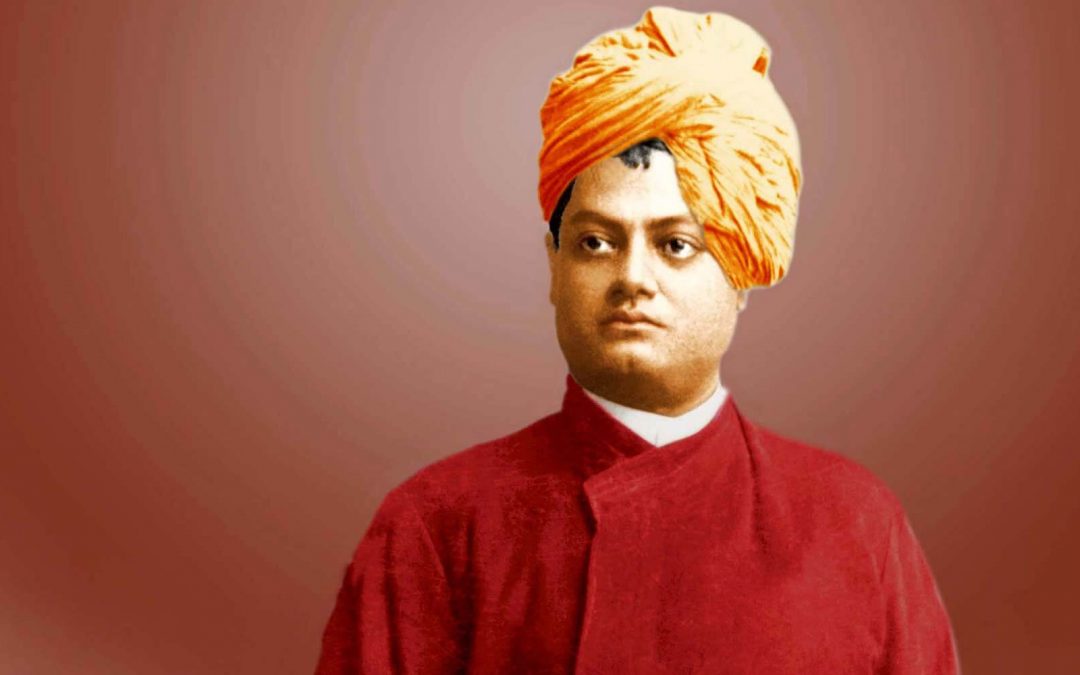
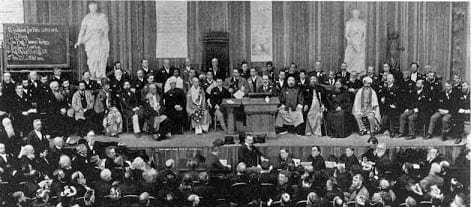

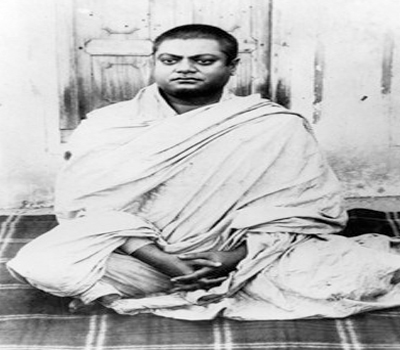
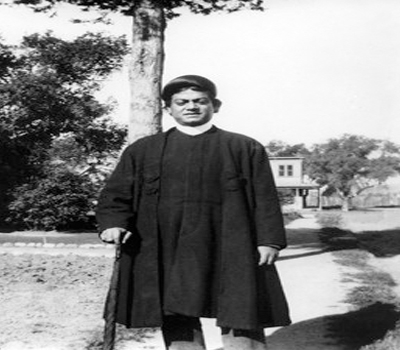
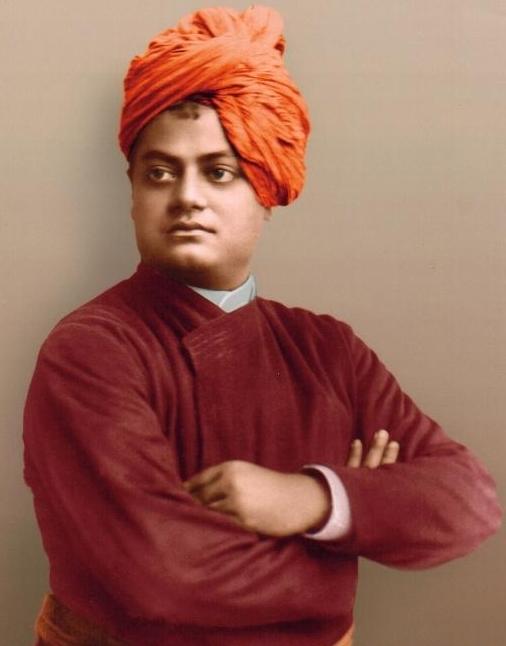
Leave A Comment